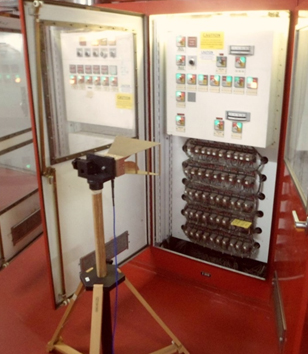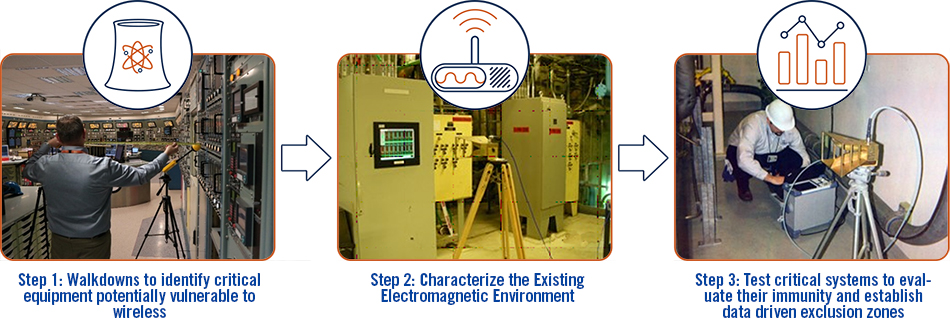Nuclear facilities stand to benefit through wireless implementation as well, but because of safety, security, and reliability concerns sites have been slow to adopt wireless technology. Additionally, the possibility of electromagnetic interference (EMI) resulting from wireless implementation has hindered the deployment of wireless technologies in nuclear facilities. To help the industry address these concerns, AMS has developed expertise and services to assist any nuclear facility implementing wireless technologies. AMS offers a comprehensive approach for wireless implementation through site walkdowns, sensor selection assistance, laboratory testing, EMI/RFI site surveys, and in-situ immunity testing. These techniques can be used to reduce overly conservative exclusion zones, identify equipment sensitive to EMI/RFI, and ensure safe use of wireless throughout a nuclear facility.
In order to expand the use of wireless technologies throughout the power block, one nuclear power plant recently undertook a three-step approach with AMS to ensure that no EMI issues occurred due to the use of wireless devices. The approach included: 1) performing walkdowns and visual evaluations of the installation of the existing plant equipment, 2) characterizing the electromagnetic environment within the plant through an EMI/RFI site survey, and 3) performing targeted immunity testing of select plant equipment to provide data driven exclusion zones.
To aid the site, AMS performed a site walkdown to evaluate the installation of sensitive/critical equipment throughout the plant for vulnerabilities to EMI from wireless devices. During the walkdown, aspects such as grounding, shielding, use of conduit and cable trays, and exposed signal leads were inspected, and a list of vulnerable equipment was developed. Numerous pieces of equipment were identified that had either vulnerable installations, were critical to plant operation or safety, had a history of malfunction in the presence of wireless devices, or could cause nuisance alarms for plant operators. For more information on these services, please click here.


























